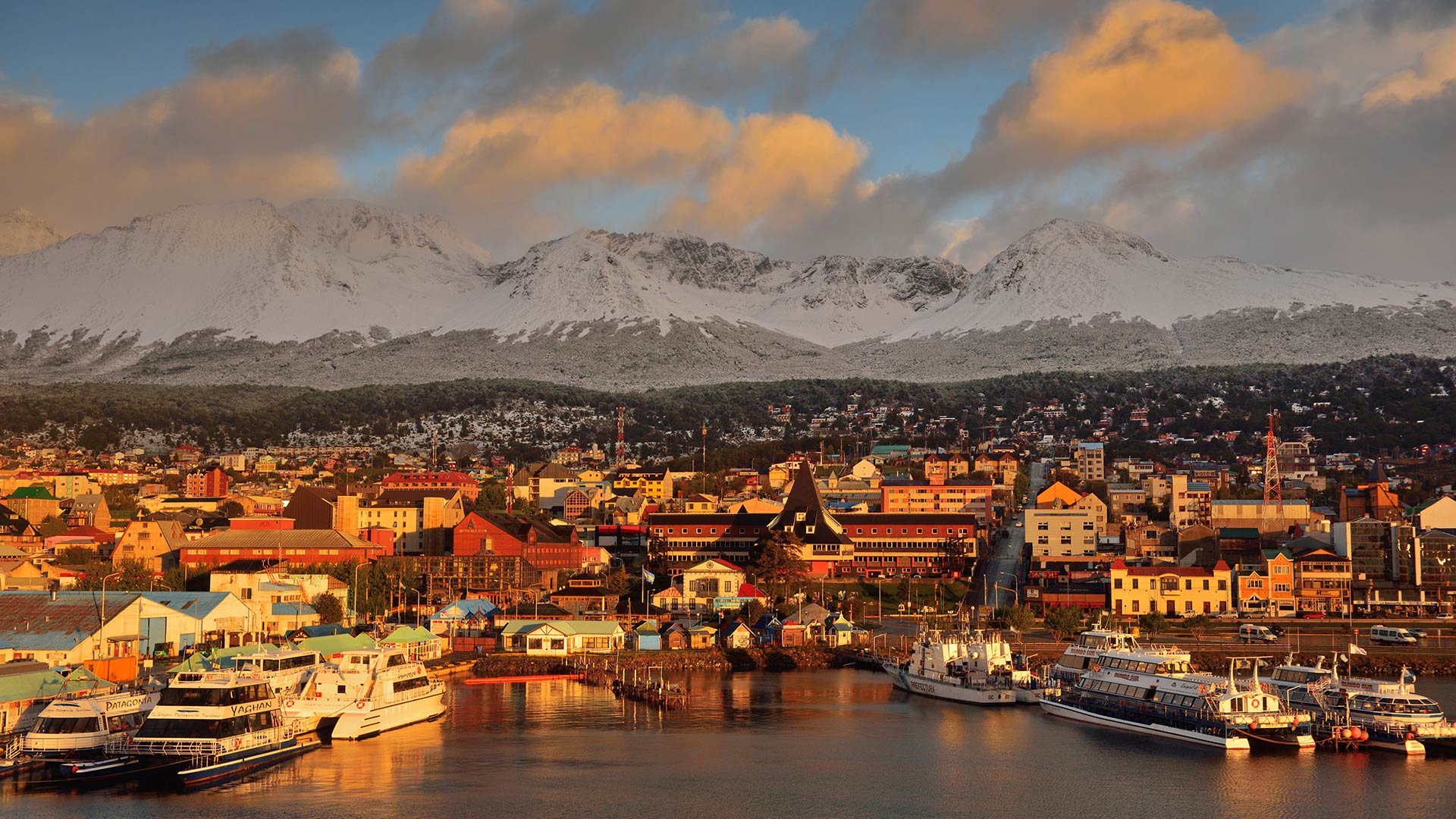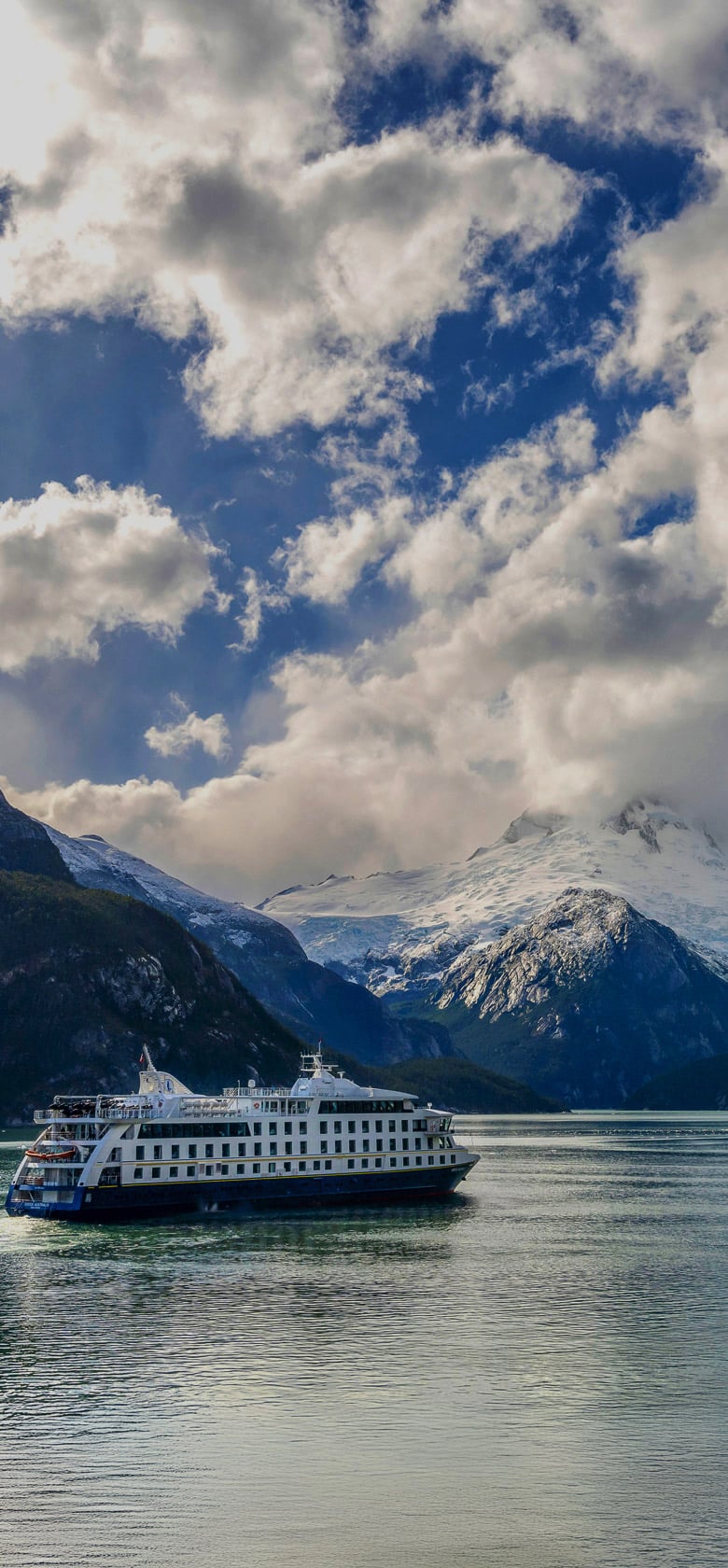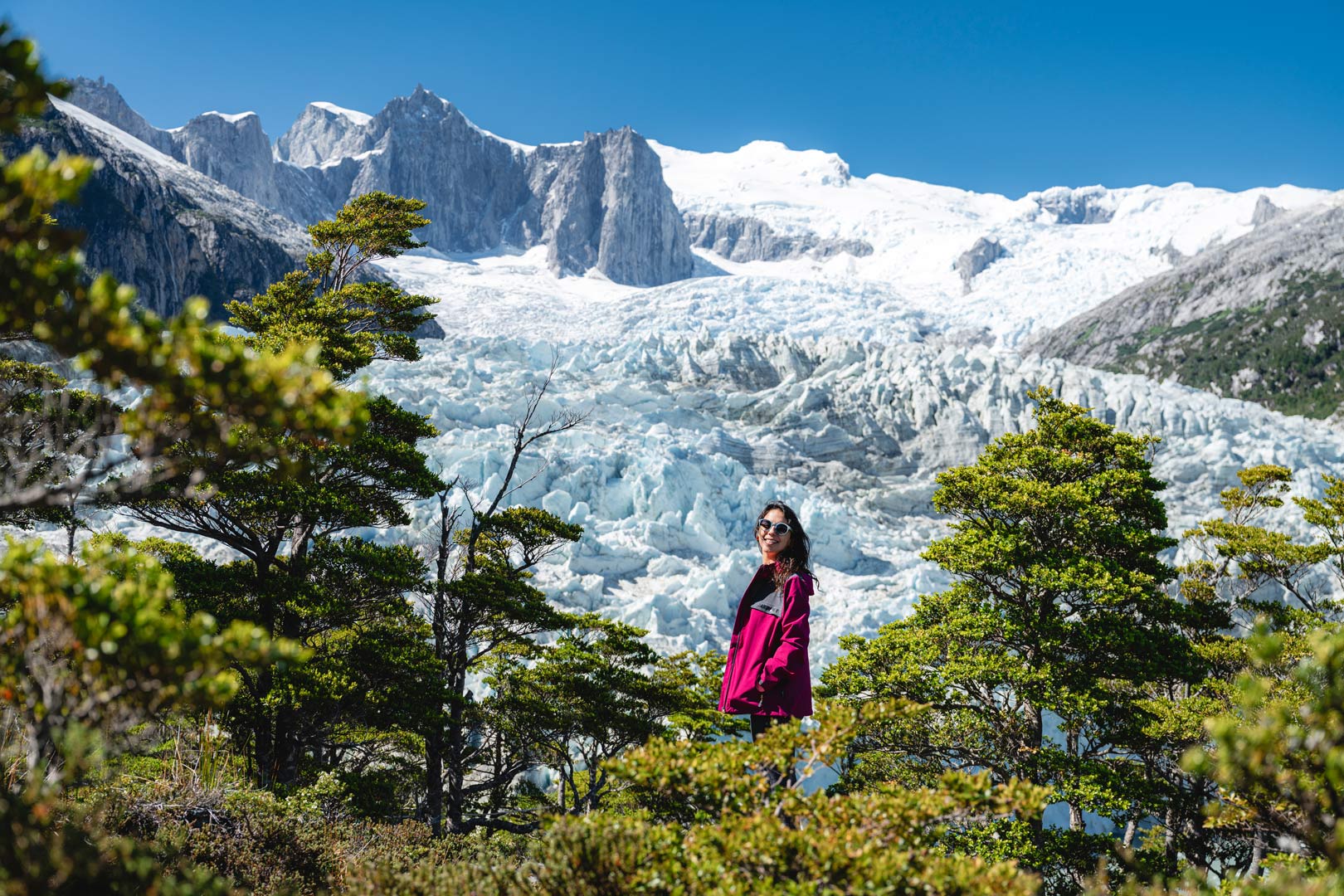Ushuaia. Argentina

from Ushuaia (Argentina) To Punta Arenas (Chile).






Cruise the fjords: Why this route is amazing.

At the southern tip of Chile and Argentina lies Patagonia, a vast land of unspoiled nature and stunning contrasts. At the farthest edge of this region, a hidden gem awaits: Tierra del Fuego archipelago, crowned by the Darwin Range, where glaciers and forests tumble towards the sea, forming a labyrinth of islands and channels rich in history and raw nature. Beyond these untouched landscapes, no land lies ahead until Antarctica.

Like for Magellan and Darwin, the last land in the Americas still holds the mystery of the unexplored. Its remoteness has kept it unspoiled, with many corners likely never to be reached.

The southernmost lands before Antarctica reveal a landscape where ice gradually emerges, coexisting with virgin forests, pristine waterways, and diverse wildlife.

Embark on a timeless journey, free from wifi and modern distractions. A unique chance to disconnect, take a pause and reconnect to the essentials.

Ensure the best price and secure your cabin for your trip to Patagonia.
from Ushuaia (Argentina) To Punta Arenas (Chile).
BOARDING TIME IN USHUAIA 18:00 hrs.
| 4 NIGHTS | |||
| CABIN | PROMO | LOW | HIGH |
| B | USD 1.695 | USD 2.466 | USD 3.357 |
| A | USD 2.315 | USD 3.296 | USD 4.607 |
| AA | USD 2.515 | USD 3.596 | USD 4.907 |
| AAA | USD 2.715 | USD 3.896 | USD 5.307 |
| AA Superior | USD 3.225 | USD 4.356 | USD 6.407 |
| AAA Superior | USD 3.435 | USD 4.646 | USD 6.927 |

9 days / 8 nights on board combining routes from US$ 3,051

